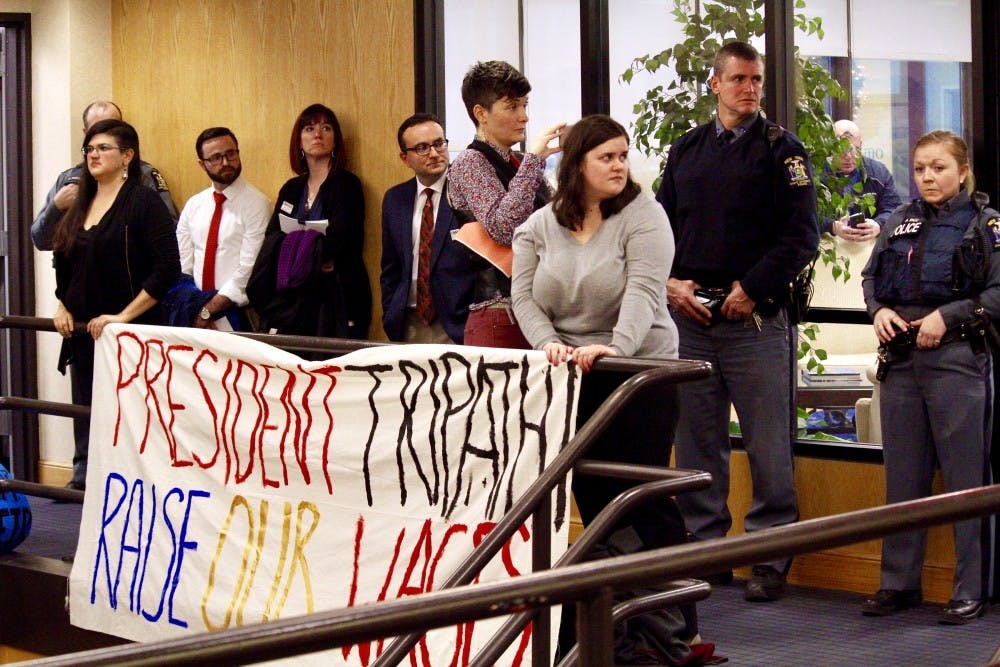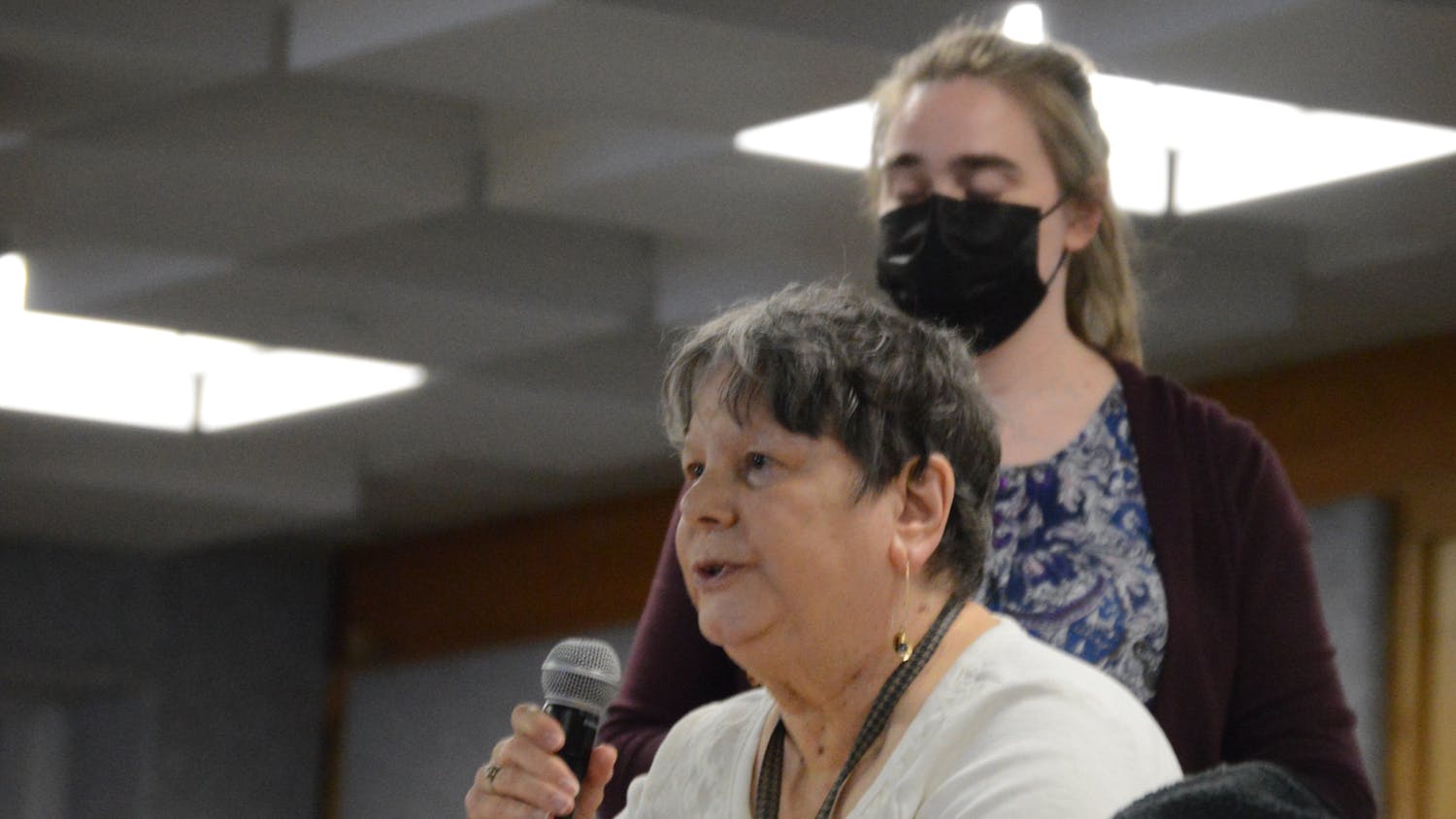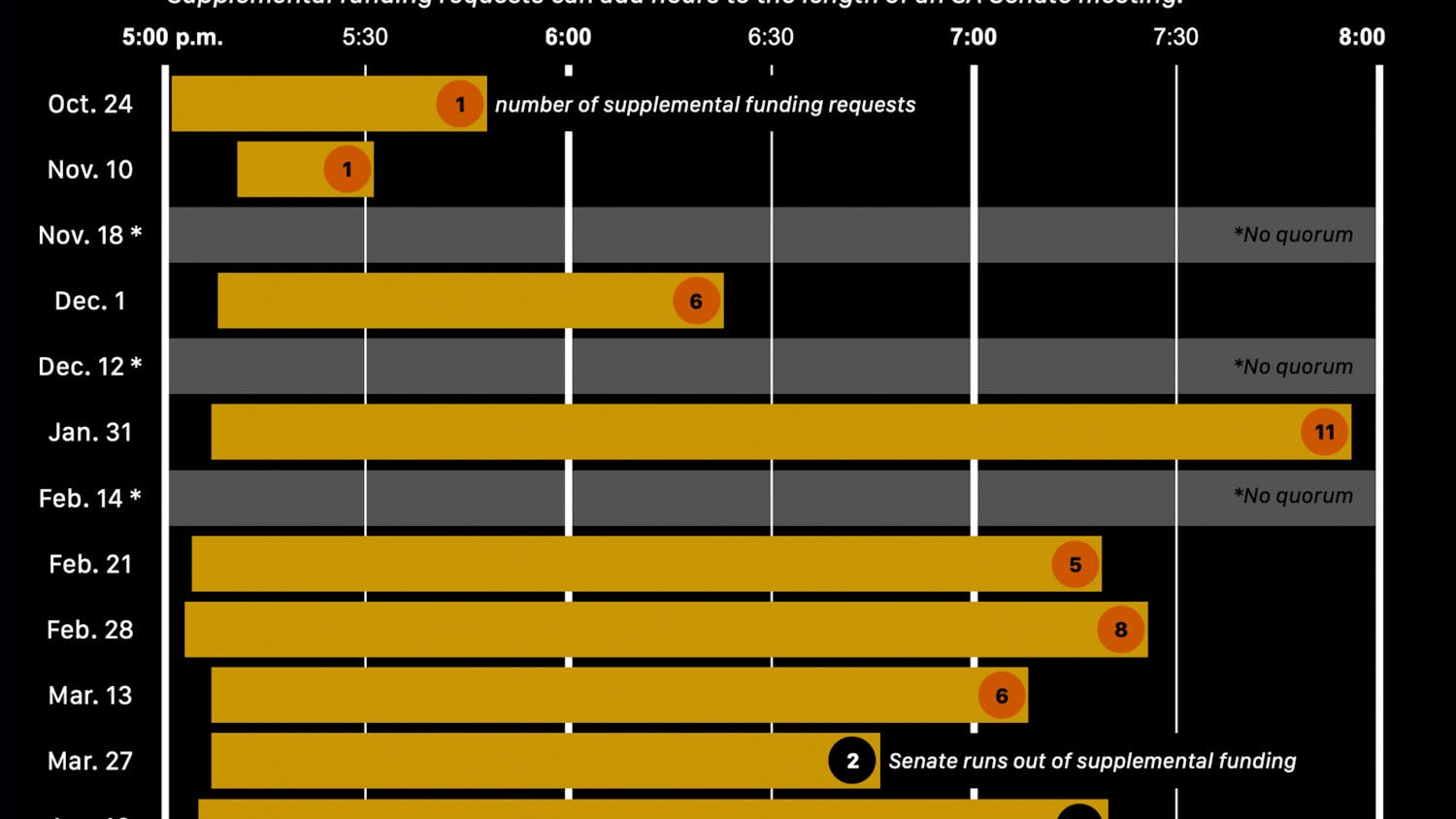A lot happened at UB and within the Buffalo community last academic year. Here’s a breakdown of some of this past year’s highlights and what to keep an eye on this upcoming year.
What you may have missed last year:
5.SUNY audit recommends 29 changes to UB Foundation finance, management operations
In SUNY’s first-ever audit of the UB Foundation, officials recommended 29 changes to the financial and management policies the private nonprofit has in place to oversee the university’s $1 billion endowment.
The report examined the 2014-16 school years and identified at least four instances where UBF board members failed to disclose conflicts of interest. Board members also violated foundation bylaws several times over the two-year period by voting on official matters without the required number of members present.
Auditors also recommended a number of changes regarding payroll and procurement policies. The report found that although the foundation established written policies for almost all other key business functions, it does not have a written policy regarding payroll.
UBF Executive Director Ed Schneider thanked audit officials in a letter and said he would work with SUNY and UB officials to address each of the report’s recommendations.
4. UB announces $650 million fundraising campaign, Boldly Buffalo
In April, President Satish Tripathi announced UB’s Boldly Buffalo campaign, which at that point had already raised $451 million since it first began privately in 2013.
Tripathi announced the campaign on the fourth annual UB Giving Day. Boldly Buffalo, which at the time of its announcement was 69 percent into its stated goal, aims to use 70 percent of its $650 million goal to fund student support with scholarships. Eighteen percent will go toward faculty support and the remaining funds will go toward “community” support, according to university officials.
The campaign has no scheduled end date.
3. Living Stipend Movement pushes for higher stipends for graduate student TAs
Last fall semester saw the Living Stipend Movement, a group of graduate students petitioning for a “living wage” TAs, hold its first public protest against the university.
In September, around 100 participants marched along the Academic Spine to deliver a petition to the administration calling for a $21,310 minimum stipend level.
In October, the movement protested outside UB’s academic excellence ceremony. The roughly 30 participants chanted, “UB works because we do,” and held signs reading “President Tripathi, raise our wages.”
To end last fall semester, the Living Stipend Movement staged a sit-in outside of administrative offices in Capen Hall.
The movement has been officially supported by various governing bodies on campus, including the Graduate Student Association.
The most progress the movement has seen came in February. The English Department raised the Ph.D candidate stipend by around $3,000 for the next year. Still, it remains to be seen if stipend levels will be raised across the university.
2. UB senior adviser resigns after relationship with student
A UB senior adviser resigned after his consensual relationship with a female student surfaced in April.
Patrick Crosby, a senior adviser in the Educational Opportunity Program had sex in his office on multiple occasions, and sent the female student sexually suggestive photos and videos taken in his office during work time.
Crosby and the student began their relationship in August 2016 and shortly after, the student became pregnant.
UB removed Crosby from his job as counselor and put him on “special assignment,” which allowed him to work from home until April. He resigned April 21.
1. Dennis Black and Andrea Constantino plead guilty to grand larceny
Former UB Vice President Dennis Black pleaded guilty to two felony charges in the first and second degree and former Campus Living Director Andrea Costantino pleaded guilty to grand larceny in the fourth degree last September.
Black paid $320,000 in restitution to the school, while Costantino repaid $14,664. Black also pleaded guilty to falsifying tax information and paid $22,238 back to the New York State Taxation and Finance Department.
Black avoided jail time despite heavy backlash from the Buffalo and university community. He was sentenced to five years probation, 2,500 hours of community service and a $5,000 fine in January.
Stories to keep an eye on this academic year:
5. One World Café begins construction in fall
Construction of UB’s newest dining hall, the One World Café, will begin in the fall and is expected to be completed during the 2020-21 school year. It will seat between 500 and 650 people and offer spaces for students and on-campus organizations to utilize.
The dining hall will be housed in an all glass building connecting the Capen Hall entrance to Silverman Library to Norton Hall. It will be a two story building with 500 to 650 seats, a hearth area and multi-purpose rooms.
The dining hall is planned to feature five different culinary stations offering new food options that haven’t been available to students before. Based on a survey asking students what types of food they’d like to eat, Caribbean, African and Indian food are likely to be offered at the dining hall.
At a UB Council meeting in June, Graham Hammill, vice provost for educational affairs and dean of the graduate school, reinforced the dining hall’s purpose to match the growing dietary needs of students while promoting the education of students as global citizens. Not only will the university’s increasing international student population largely benefit from the dining hall, but students looking to expand their culinary pallet have a new place to do so.
4. Where does South Campus go from here?
With the Jacobs School of Medicine and Biomedical Sciences opening downtown, South Campus now has even more unused space than before. The medical school’s relocation opens up space for the redevelopment of South Campus as described in the master physical plan.
The campus is moving towards becoming a graduate education-oriented campus. The master plan calls for the renovation of the former medical school buildings to be used for other health-focused fields, such as public health and the dental school.
The plan also calls for a new building to provide spaces for the graduate school of education.
Recently, Hayes Hall was renovated, reopened in 2016, and the new Kapoor Hall finished construction in 2012.
3. How will the new SA e-board do?
In March, 650 students voted in the unopposed SA e-board elections, roughly three times as many students as 2015’s unopposed election.
The R.E.A.L. party, comprised of President Gunnar Haberl, senior political science and legal studies major, Vice President Anyssa Evelyn, senior health and human services major, and Treasurer Tanahiry Escamilla, senior chemical and biological engineering major, hopes to follow through on their campaign promises.
The party’s platform advocates “restoring effective, accountable leadership.” They hope to improve mental-health care on campus with the possible addition of a campground, address clubs finding spaces on campus and helping club members better understand their budgets.
Haberl said he and his team are also considering downsizing the two Spring and Fall Fests into one fest due to budgetary reasons as well.
The e-board is one of the most experienced in recent memory, and it will be interesting to see how they serve in the three highest student-leadership roles on campus.
2. How will the new medical campus affect the Fruit Belt and Allentown?
The new $350 million Jacobs School of Medicine and Biomedical Sciences opened for classes in January of this year to a mix of apprehension and excitement in the two neighborhoods surrounding it.
To the east, the historically poor Fruit Belt neighborhood already faces an encroaching wave of gentrification from the medical campus. Long-time residents are seeing more and more medical campus employees and students parking in front of their homes and businesses. Rising property values also pose an existential threat to the historic neighborhood, and UB’s stronger presence in the area could make the situation worse.
To the west, the equally historic Allentown, a more affluent neighborhood, has also seen a surge in property values. The renter-heavy district could see much of its artistic reputation eroded.
Both neighborhoods stand on a precipice: either UB’s investment in downtown will bolster the businesses in the area and strengthen the local economy, or overwhelmingly gentrify it.
1. What’s next for the Living Stipend Movement?
After a year of organizing protests and demonstrations, the Living Stipend Movement has only seen in an increase in the English TA stipends.
The movement, which calls for a minimum $21,330 stipend level for graduate TAs, has been vocal throughout the last year about the impact the current stipend levels have on the quality of life and education at UB.
“We don’t want to live in poverty,” said Elif Ege, a Ph.D candidate in global gender studies at a protest outside the Academic Excellence ceremony in October 2017. “We just want to be excellent like the people who receive these awards and we congratulate them, but in order to achieve that for ourselves the administration has to meet our demands.”
University officials have thus far said the stipend levels are set at the departmental level and any changes would have to be made there.





